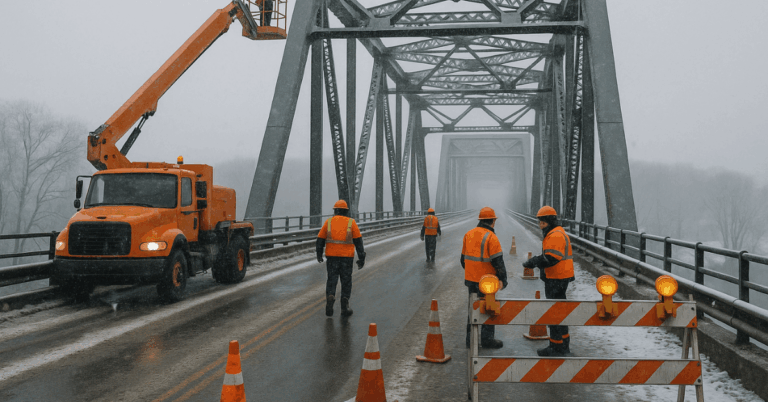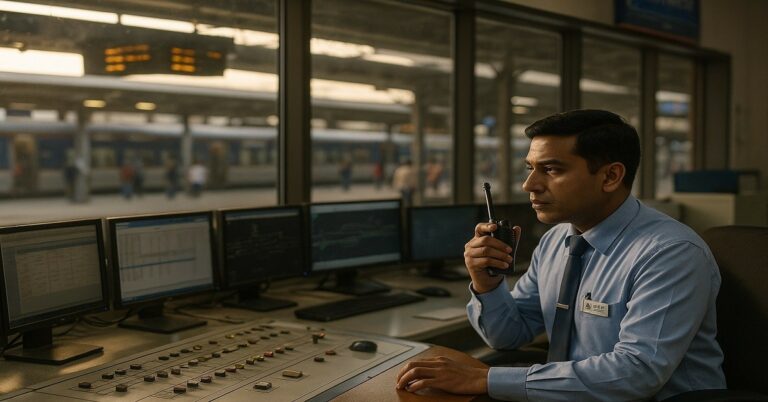Semi-high-speed trains introduced in new zones are improving regional connectivity and transportation systems. They combine speed, technology, and accessibility to make travel faster and more efficient.
These trains offer affordable alternatives to full high-speed rail while cutting travel times. This article explains how they work, where they are operating, and their impact on mobility and growth.
Understanding Semi-High-Speed Trains
Semi-high-speed trains are designed to operate between 160 and 200 km/h, offering a balanced alternative between regular and high-speed trains.
They use upgraded tracks, better signaling systems, and aerodynamic designs to achieve faster performance. The focus is on improving efficiency while keeping costs manageable.
These systems often rely on existing railway corridors, reducing the need for complete infrastructure replacement.

Key Technological Features
These trains integrate modern braking systems, real-time monitoring, and energy-efficient engines. They also feature enhanced passenger safety mechanisms such as automatic train control and advanced signaling.
The cabins are designed for comfort, offering amenities like Wi-Fi and ergonomic seating. The goal is to provide a smooth, fast, and safe travel experience for passengers.
How Do They Differ from High-Speed Trains?
Two main distinctions highlight how semi-high-speed systems differ from high-speed trains. These differences emphasize speed range, infrastructure, and cost-efficiency improvements.
- Speed and Track Design: High-speed trains exceed 250 km/h and require entirely new, dedicated tracks for safety and stability.
- Infrastructure Adaptation: Semi-high-speed systems modify existing railway lines to handle greater speeds while maintaining safety standards.
- Cost and Implementation: These systems are more cost-effective and faster to deploy than high-speed projects.
- Adoption by Developing Nations: Many developing countries choose this model to efficiently improve intercity connections.
New Zones Selected for Implementation
The introduction of semi-high-speed trains in new zones follows detailed studies on passenger demand and infrastructure capacity. Zones are typically chosen for their high population density, tourism potential, and economic activity.
The goal is to connect major cities with regional centers while improving accessibility for smaller towns. Implementation phases often begin with pilot routes before expanding into full-scale operations.
Pilot Corridors and Expansion Plans
Pilot corridors serve as testing grounds for performance, safety, and passenger response. These corridors provide valuable insights into energy use, maintenance needs, and ridership trends.
Expansion plans depend on data collected from these initial runs. Future networks will likely extend to cover new economic and industrial regions.
Collaboration with Local and National Authorities
Successful implementation relies on collaboration between transport ministries, railway authorities, and private contractors. These partnerships ensure funding, planning, and technical compliance align with national infrastructure goals.
Local authorities assist in station upgrades and public awareness campaigns. Joint efforts strengthen long-term sustainability and efficiency.
Infrastructure Development
Upgrading existing tracks, signaling systems, and electrical lines is critical for semi-high-speed train operations. The modernization process involves heavy investment but results in safer and smoother rides.
Sustainable materials and eco-friendly construction practices are often prioritized. These upgrades also benefit traditional train services by improving network reliability.
Modernization Investments
Funding comes from national budgets, public-private partnerships, and international agencies. Governments often focus on long-term returns such as increased tourism and job creation.
The modernization also includes developing maintenance hubs and staff training facilities. These centers ensure consistent quality and operational safety.
Environmental Sustainability
Semi-high-speed rail projects aim to reduce emissions and energy consumption. Electric propulsion and regenerative braking systems minimize carbon output.
Construction methods prioritize recycling and low-impact land use. This approach aligns with national climate commitments and global sustainability goals.
Passenger Experience and Benefits
Passengers experience greater comfort, speed, and reliability with semi-high-speed trains. The interiors are modern and ergonomic, offering enhanced travel quality.
Accessibility features accommodate elderly and disabled passengers. Ticketing systems are digital, allowing easier reservations and faster check-ins.
Travel Time and Connectivity Improvements
Semi-high-speed networks significantly reduce travel times between major cities. Shorter trips encourage economic integration and make daily commuting more practical.
The networks link to metro systems, airports, and highways for seamless mobility. This interconnectivity supports regional business growth and tourism.
Economic and Social Impact
The development of semi-high-speed zones boosts employment and economic productivity. Construction projects generate local jobs and support industries like steel and electronics.
Improved transport access increases regional investment opportunities. Socially, it promotes equal access to education, healthcare, and work.
Challenges and Limitations
While beneficial, these systems face technical and financial challenges. Upgrading mixed-speed rail networks requires precise engineering to prevent disruptions.
Funding remains a major concern, as projects demand consistent government commitment. Public awareness and acceptance also influence the success of operations.
Maintenance and Cost Issues
Semi-high-speed systems demand advanced maintenance and monitoring facilities. Spare parts and skilled technicians must be available to ensure reliability.
Costs may rise due to imported components or specialized equipment. To address this, many countries promote local manufacturing initiatives.
Safety and Operational Concerns
Safety depends on continuous monitoring, staff training, and system upgrades. Emergency response systems and periodic inspections are mandatory.
Coordination between operators and local authorities ensures compliance with standards. Efficient communication channels minimize delays and safety risks.
Future Expansion and Technological Outlook
The future of semi-high-speed trains lies in technological innovation and broader coverage. Countries plan to expand corridors to connect industrial and coastal cities.
AI-based traffic control and predictive maintenance will enhance reliability. As technology advances, speeds may increase closer to full high-speed levels.
Integration with Smart Mobility
The integration of semi-high-speed networks with smart transportation systems creates a unified mobility experience. Data-driven tools can optimize scheduling, crowd management, and energy use.
This alignment supports digital transformation goals in public transport. It also enhances passenger satisfaction and operational efficiency.
International Collaboration
Partnerships with international rail companies help accelerate progress. Technology transfer programs train local engineers and improve industry standards.
Shared expertise leads to more affordable and efficient systems. Collaborative efforts contribute to global transport modernization.
Moving Forward: The Future of Semi-High-Speed Mobility
Semi-high-speed trains introduced in new zones mark a major leap toward modern transportation. They connect cities faster, reduce emissions, and promote sustainable growth.
These systems balance innovation with practicality, benefiting both passengers and economies. As more regions adopt this model, it will redefine how people move, work, and connect across nations.












